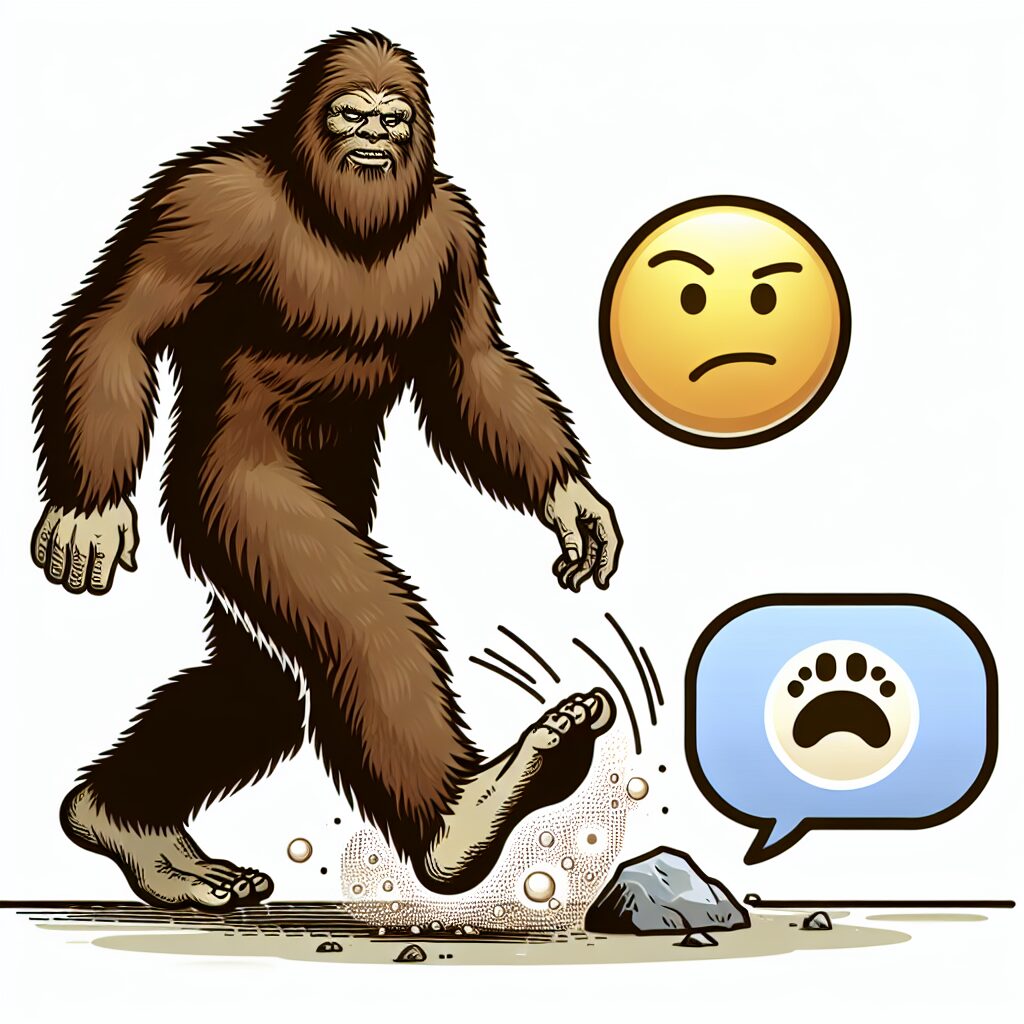When it comes to emoji, they say a picture is worth a thousand words, but in this digital age, sometimes one emoji can spark a thousand debates. This is precisely what happened when Unicode, the consortium responsible for maintaining the global emoji standard, unveiled their latest creation—a Bigfoot emoji.
Bigfoot, the legendary humanoid creature that walks its mystery across the folklore of North America, has finally been immortalized in the emoji universe. However, not everyone is thrilled about the digital representation of this elusive beast. Critics argue that the new emoji doesn’t pay due respect to Bigfoot’s iconic image.
Let’s take a closer look. The new emoji features a friendly, cartoonish depiction of Bigfoot. He’s smiling, with his arms wide open as if inviting us for a hug. It’s an endearing image, to be sure, but it’s not the Bigfoot we’ve come to know from countless stories, eyewitness accounts, and alleged footprints. That Bigfoot is a mysterious, intimidating figure, a symbol of the untamed wilderness that still exists beyond our urban sprawl.
The debate here isn’t about the existence of Bigfoot, but about the portrayal of cultural and mythical icons in the digital realm. Emojis have become an integral part of our online communication, a universal language that transcends borders. They should, therefore, be accurate representations of the concepts, ideas, or creatures they depict.
That being said, it’s important to remember that emojis are, by their very nature, playful and lighthearted. Unicode has to walk a tightrope between creating an emoji that is recognizably Bigfoot, yet approachable enough to be used in everyday communication. It’s a tall order, especially considering the hairy, eight-foot-tall subject.
In the grand scheme of things, the Bigfoot emoji debate might seem trivial. However, it’s a fascinating case study of how technology intersects with culture. It invites us to consider the weight we place on seemingly innocuous digital symbols and the power they hold in shaping our collective imagination. We all have a part in this tale, whether we’re furiously debating the new Bigfoot emoji or simply using it to add a bit of mythical intrigue to our texts. After all, isn’t it wonderful that in this hyper-connected digital age, we still have room for a little mystery?
